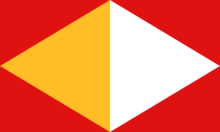Bissu
| |
This article has multiple statements without valid sources to support them. You can help the Nonbinary Wiki by adding sources to this article! |
Bissu, a metagender originating from the Bugis society in Indonesia, is described as a gender that "embodies the totality of masculinity and femininity" and is considered to be "a combination of all genders." It is one of the five genders that the Bugis recognize and is said to play a spiritual role in Bissu culture, said to "bridge the worldly and the divine." Many Bissu are intersex, but not all are. Among the Bissu, four other genders exist in Bugis society. The "makkunrai ("female women"), oroani ("male men"), calalai ("female men"), and the calabai ("male women")." The Bugis culture believes that all five genders must coexist in harmony.

HistoryEdit
For at least six centuries, Bissu have been an important part of the spirituality of the Bugis. As noted below, in Bugis mythology, Bissu comes down from heaven to help humanity.
" ‘You ask how this world came to be? Well let me tell you. Up there in the heavens, the gods decided they would bring life to this lonely planet. They therefore sent down one of their most aspiring deities, Batara Guru. But Batara Guru was not good at organizing things. To do all of this, two bissu were needed. So the gods sent down two bissu who flanked Batara Guru as he descended. And when they arrived, the bissu set about making everything blossom; they created language, culture, customs [adat], and all of the things that a world needs if it is going to blossom. That’s how the world began you see’ (Haj Bacco’). "
Near the end of the 16th century, in Bugis, the battle between Islam and Christianity was largely undecided in the South Sulawesi Peninsula. Most of the surrounding kingdoms had been converted to Islam under the influence of various rulers. Islam Gowa and Tallo, twin kingdoms, started the "Islamic wars" when the surrounding kingdoms declined their invitation to adopt Islam as their religion. In the 1950's and 60's, an Islamic movement took place, which lead to violent persecution of Bissu and banning of their ceremonies. Although, since the 1990's, there has been an effort to bring back traditional Bissu ceremonies, which, unfortunately, have been used to increase tourism in a lot of cases.
The Bissu are challenged with anti-LGBTQIA+ sentiment, leading to the decline of Bissu. However, Bissu traditions are considered to be an important cultural aspect by the government, and as such, as early as 2019, the former head of cultural issues of the South Sulawesi tourism and culture agency, Pangkep Dasriana, has been working to preserve and promote Bissu traditions in festivals not just within Suwlawesi, but across Indonesia as a whole.
In modern Bugis socierty, the Bissu still perform blessings and ritual ceremonies in all parts of Bugis life, holding a respected role as priests in their communities. Calalai and calabai can also be called Bissu in some cases and perform blessings and ceremonies.
See alsoEdit
ReferencesEdit
- https://www.usnews.com/news/best-countries/articles/2016-06-17/what-we-can-learn-from-an-indonesian-ethnicity-that-recognizes-5-genders
- https://www.britannica.com/list/6-cultures-that-recognize-more-than-two-genders
- https://en.wikipedia.org/wiki/Gender_in_Bugis_society#Bissu
- https://www.atlasobscura.com/articles/in-indonesia-nonbinary-gender-is-a-centuriesold-idea
- "The Bugis of Indonesia ENGLISH DUBBED- Transcript"
- https://web.archive.org/web/20230331060205/https://pair.australiaindonesiacentre.org/news/notes-from-south-sulawesi-gender-diversity-in-bugis-society/
- https://web.archive.org/web/20220127052724/https://en.tempo.co/read/923514/saving-sulawesis-nearly-extinct-bissu-community
- https://web.archive.org/web/20190227045350/https://www.abc.net.au/news/2019-02-27/indonesia-fifth-gender-might-soon-disappear/10846570